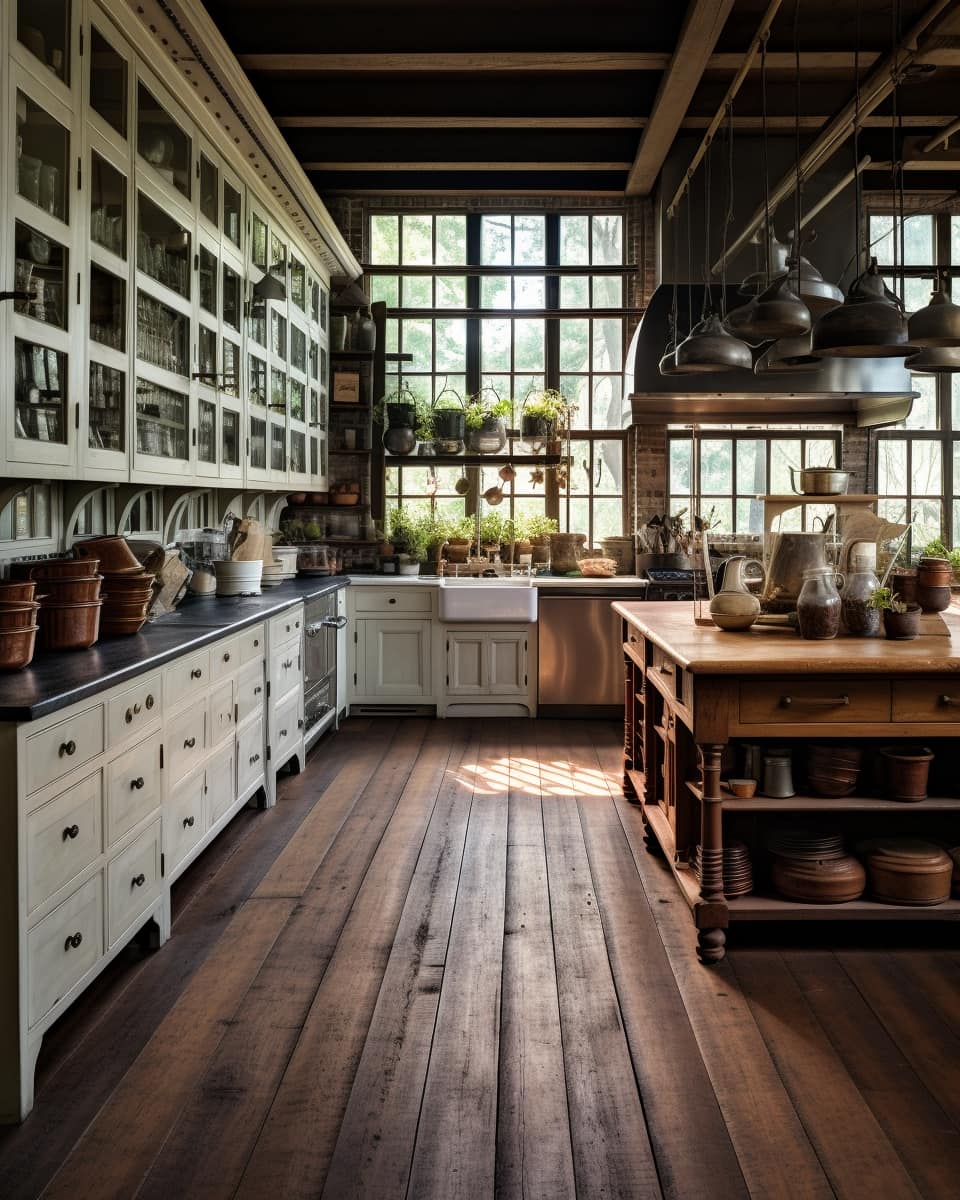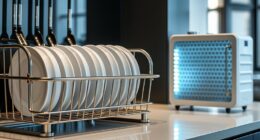Curious if your appliances from the United States will function properly in the Philippines? No need to worry, as we have all the necessary information for you!
In this article, we’ll delve into the nitty-gritty details of the Philippine electrical system, voltage and frequency differences, plug types and adapters, and so much more.
So, sit back, relax, and let us guide you through the ins and outs of using US appliances in the beautiful country of the Philippines.
Key Takeaways
- US appliances operate on a different voltage system (110-120V) compared to the Philippines (220-240V), so voltage converters are needed to match the voltage requirement.
- Plug adapters are necessary to fit US appliances into Philippine outlets, as the plug types differ between the two countries (US uses type A and B plugs, while the Philippines uses type A, B, and C plugs).
- Not all appliances are compatible with voltage converters, so it is important to check the specifications of the appliances to avoid damage or malfunction.
- Appliances with a universal voltage range of 100-240V, such as laptops, smartphones, and camera chargers, can work with just a plug adapter to convert the shape of the plug to fit the socket, without the need for voltage converters or buying new appliances.
Philippine Electrical System Overview
In the Philippines, our electrical system operates on a 220-240 volt, 60 Hz frequency. This means that appliances from the United States, which typically operate on a 110-120 volt, 60 Hz system, may not work properly without the use of voltage converters and plug adapters.

Voltage converters are essential for stepping down the higher voltage from the Philippine electrical system to match the lower voltage requirement of US appliances. Plug adapters, on the other hand, are necessary to ensure that the US appliances can be plugged into the Philippine outlets.
It’s important to note that not all appliances are compatible with voltage converters, so it’s crucial to check the appliance’s specifications before using one. Additionally, it’s recommended to consult with an electrician or a knowledgeable professional to ensure the appropriate use of voltage converters and plug adapters for safe and efficient operation of US appliances in the Philippines.
Voltage and Frequency Differences
To continue our discussion, let’s delve into the voltage and frequency differences between the electrical systems of the United States and the Philippines. Understanding electrical compatibility is crucial when it comes to using appliances from one country in another. The table below highlights the common voltage and frequency standards in both countries:
| Country | Voltage (V) | Frequency (Hz) |
|---|---|---|
| United States | 120 | 60 |
| Philippines | 220 | 60 |
As you can see, the voltage in the United States is lower than in the Philippines. This means that appliances designed for the US market may not work properly in the Philippines without a voltage converter. However, both countries share the same frequency standard of 60 Hz. It is essential to check the voltage and frequency requirements of your appliances before using them in another country to avoid damage or malfunction.

Understanding Plug Types and Adapters
Continuing our discussion on voltage and frequency differences, let’s now explore the topic of plug types and adapters. When it comes to electrical compatibility between countries, plug types play a crucial role. Here are three key points to understand:
- Plug Types: Different countries have different plug types. The United States uses type A and B plugs, while the Philippines uses type A, B, and C plugs. It’s essential to understand the specific plug types used in both countries to ensure compatibility.
- Physical Adapters: To connect different plug types, you’ll need a physical adapter. These adapters allow you to convert the shape of the plug to fit the outlet in the Philippines. Make sure to select the appropriate adapter based on the plug type differences.
- Voltage Conversion: It’s important to note that plug adapters don’t convert voltage. If the voltage requirements of your US appliances don’t match the voltage in the Philippines, you may need a voltage converter to avoid damage to your appliances.
Understanding the different plug types and adapters will help you ensure a smooth transition when using US appliances in the Philippines. Now, let’s move on to discussing appliances that can work with just a plug adapter.
Appliances That Can Work With Just a Plug Adapter
Let’s explore which appliances can easily work with just a plug adapter. Plug adapters are useful devices that allow you to use appliances from one country in another country without the need for a voltage converter. They simply convert the shape of the plug to fit the socket in the destination country.
Plug adapter compatibility mainly depends on the voltage requirements of the appliance. Appliances that operate on a universal voltage range of 100-240V, such as laptops, smartphones, and camera chargers, can easily work with just a plug adapter. These appliances are designed to automatically adjust to different voltages, making it convenient to use them worldwide.

The benefits of using plug adapters include the ability to use your existing appliances without the need for additional converters or buying new appliances in a different country.
Appliances That Require Voltage Conversion
Now, we’ll delve into appliances that necessitate voltage conversion. For these appliances, simply using a plug adapter won’t suffice. To ensure that the appliance functions properly and safely, a voltage converter or a step-down transformer is required.
Here are three key points to consider when dealing with appliances that require voltage conversion:
- Voltage Converters: These devices convert the voltage of the power supply to match the requirements of the appliance. They typically have input and output plugs, along with a switch to select the desired voltage.
- Step-Down Transformers: These transformers reduce the voltage from the power supply to a lower level suitable for the appliance. They’re often used for appliances with higher power requirements, such as refrigerators or air conditioners.
- Wattage and Compatibility: When choosing a voltage converter or step-down transformer, it’s crucial to consider the wattage rating of both the appliance and the converter. Using a converter with insufficient wattage can lead to overheating and damage to the appliance.
It is essential to consult the appliance’s manual or the manufacturer’s specifications to determine the correct voltage converter or step-down transformer needed. Additionally, professional assistance may be required to ensure the safe and proper functioning of these appliances.

Appliances That Require Frequency Conversion
When it comes to appliances that require frequency conversion, it’s essential to consider the compatibility of the frequency between the US and the Philippines. Different countries operate on different frequencies, with the US using 60Hz and the Philippines using 50Hz.
This means that appliances designed for use in the US may not work properly in the Philippines without a frequency converter. It’s important to check the power adapter requirements for each appliance and ensure that they’re compatible with the frequency in the Philippines.
Additionally, safety considerations should be taken into account when converting frequencies to prevent any potential damage or hazards.
Frequency Compatibility for Appliances
Appliances that require frequency conversion pose a compatibility challenge when using US appliances in the Philippines. The Philippine electrical system operates at a frequency of 60Hz, while the US system operates at 50Hz. This difference in frequency can cause issues for appliances that rely on the synchronization of voltage and frequency.

Here are three key points to consider when it comes to frequency compatibility for appliances in the Philippines:
- Frequency-sensitive appliances: Certain appliances, such as clocks, timers, and motors, are designed to operate at a specific frequency. When these appliances are used in a country with a different frequency, they may not function properly or may become damaged.
- Frequency converters: To address the frequency discrepancy, frequency converters can be used to convert the 50Hz frequency of US appliances to the 60Hz frequency used in the Philippines. These converters adjust the frequency and voltage to ensure compatibility.
- Compatibility verification: Before using US appliances in the Philippines, it’s crucial to verify their compatibility with the Philippine electrical system. This can be done by checking the appliance’s specifications or consulting with an electrician.
Understanding the importance of voltage and frequency synchronization is essential when using US appliances in the Philippines. By ensuring compatibility, you can avoid potential damage to your appliances and ensure their proper functioning in the Philippine electrical system.
Power Adapter Requirements
To ensure compatibility with the Philippine electrical system, we need to address the power adapter requirements for appliances that require frequency conversion. This means that appliances that require frequency conversion, such as those with motors, clocks, or timers, will need a power adapter to adjust both the voltage and frequency to match the Philippine electrical system.
When it comes to plug adapter compatibility, it’s important to note that the Philippines uses Type A and Type B plugs, which are commonly found in North America. However, the voltage and frequency standards in the Philippines are different from those in the United States.

While the US operates on a 120-volt, 60 Hz system, the Philippines uses a 220-volt, 60 Hz system. It’s crucial to use the correct power adapter to prevent damage to the appliance and ensure proper functionality.
Safety Considerations for Conversion
Addressing safety considerations for converting appliances that require frequency conversion, we need to be mindful of potential risks and ensure proper precautions are taken. When it comes to conversion safety and electrical compatibility, here are three important factors to consider:
- Voltage and Frequency Ratings: Before converting an appliance, you must verify if the voltage and frequency of the appliance are compatible with the Philippine electrical system. Using an appliance with incompatible voltage or frequency can lead to malfunctions or even electrical hazards.
- Quality of Conversion Equipment: It’s crucial to use high-quality frequency converters that are specifically designed for the appliance you’re converting. Poor quality converters may not provide stable power output, which can damage the appliance and pose safety risks.
- Professional Installation: To ensure a safe and proper conversion, it’s recommended to seek professional assistance for installing the conversion equipment. A professional technician will ensure all connections are secure and the conversion process is carried out correctly.
Considering these safety measures, let’s now explore appliances that require both voltage and frequency conversion.
Appliances That Require Both Voltage and Frequency Conversion
How do we handle appliances that require both voltage and frequency conversion when using them in the Philippines?

For appliances that require both voltage and frequency conversion, such as certain types of microwaves, washing machines, and refrigerators, specialized converters are necessary.
Voltage converters are used to transform the voltage from the Philippine standard of 220 volts to the US standard of 110 volts.
Frequency converters, on the other hand, are used to adjust the frequency from the Philippine standard of 60 Hz to the US standard of 50 Hz.
These converters ensure that the appliances can function properly and safely in the Philippines.

However, it’s important to note that using voltage and frequency converters may still pose risks and considerations, which will be discussed in the subsequent section.
Risks and Considerations for Using US Appliances in the Philippines
When using US appliances in the Philippines, we need to be aware of the risks and considerations involved. Here are three key points to keep in mind:
- Risks of using incompatible appliances: One of the primary risks is that US appliances are designed to operate on a different voltage and frequency than what’s commonly found in the Philippines. Plugging in an incompatible appliance without a voltage converter or frequency adapter can cause damage to the appliance and pose a safety hazard.
- Tips for finding compatible appliances: To avoid the risks associated with incompatible appliances, it’s important to look for appliances that are specifically designed for international use or have dual voltage capabilities. These appliances can handle both the US voltage/frequency and the Philippines voltage/frequency, ensuring safe and efficient operation.
- Consult a professional: When in doubt, it’s always a good idea to consult with an electrician or an expert in electrical equipment. They can provide guidance on the compatibility of your US appliances in the Philippines and recommend appropriate solutions to ensure safe usage.
Where to Buy Appliances in the Philippines
To address the issue of finding compatible appliances, we can explore various retailers and online platforms in the Philippines where one can purchase appliances that are suitable for use with US voltage and frequency.
When it comes to where to buy appliances, some popular options include major appliance stores like Abenson, SM Appliance Center, and Robinsons Appliances. These retailers offer a wide range of appliances, including refrigerators, ovens, washers, and dryers, that are compatible with US voltage and frequency.

Additionally, online platforms such as Lazada and Shopee also provide a convenient way to shop for appliances. One advantage of purchasing appliances online is the ability to compare prices and read customer reviews before making a decision.
It’s important to note that prices for appliances may vary depending on the brand, features, and size, so it’s advisable to compare prices from different retailers to get the best deal.
Investing in Philippine-Compatible Appliances
Our recommended approach for investing in Philippine-compatible appliances is to thoroughly research and consider the warranties and after-sales services provided by reputable retailers.
Here are three factors to consider when investing in local brands and comparing the costs with imported appliances:

- Quality and Reliability: Look for appliances that are known for their durability and performance. Check customer reviews and ratings to gauge the overall satisfaction with the product.
- Energy Efficiency: Consider appliances that are energy-efficient to help you save on electricity bills in the long run. Look for the Energy Efficiency Label (EEL) provided by the Department of Energy to ensure that the appliance meets the required standards.
- Service and Support: Choose brands that offer reliable after-sales services and have a network of authorized service centers in the Philippines. This will ensure that you can easily get assistance and repairs if needed.
Tips for Safely Using US Appliances in the Philippines
We recommend following these tips to safely use US appliances in the Philippines.
- When using portable appliances, it’s important to check their voltage compatibility with the local standards.
- The Philippines operates on a 220-240 volt system, while the United States uses a 110-120 volt system.
- To ensure the safe operation of your US appliances, it’s advisable to use voltage regulators or transformers.
- These devices can adjust the voltage to match the requirements of your appliances, preventing any damage that may occur due to voltage fluctuations.
- When purchasing voltage regulators, it’s essential to choose ones that are compatible with the wattage and voltage range of your US appliances.
- Additionally, always read and follow the manufacturer’s instructions for proper usage and maintenance of the voltage regulators.
Frequently Asked Questions About USing US Appliances in the Philippines
While it may seem daunting, using US appliances in the Philippines is possible with the right knowledge and precautions. Here are some frequently asked questions about using US appliances in the Philippines:
- Where can I buy US appliances in the Philippines?
- You can buy US appliances in the Philippines from reputable retailers that specialize in imported appliances. Some popular options include appliance stores, online marketplaces, and even international home improvement stores.
- What are the common issues with using US appliances in the Philippines?
- One common issue is the difference in voltage and plug types between the US and the Philippines. US appliances typically operate on 110 volts, while the Philippines uses 220 volts. It’s important to use a voltage converter or transformer to match the voltage requirements of your US appliances. Additionally, the plug type in the Philippines is different from the US, so you may need to use plug adapters or have your appliances rewired.
- Are there any other considerations when using US appliances in the Philippines?
- Yes, it’s important to check the compatibility of your appliances with the local power grid frequency. The US operates on a 60Hz frequency, while the Philippines uses a 50Hz frequency. Some appliances may not function properly or may experience performance issues when used with a different frequency. It’s also recommended to consult the appliance manufacturer or a professional electrician to ensure safe and proper usage of your US appliances in the Philippines.
Frequently Asked Questions
Can I USe a US Hair Dryer in the Philippines Without Any Modifications?
Yes, we can use a US hair dryer in the Philippines without modifications. However, it is important to note that the voltage in the Philippines is 220V, while in the US it is 110V. Therefore, a voltage converter may be required for proper functionality.
What Are the Risks Associated With USing US Appliances in the Philippines?
Using non-compatible appliances from the US in the Philippines poses risks due to the dangers of an electrical system mismatch. It is important to consider voltage differences and potential damage to both the appliance and electrical system.

Where Can I Buy Appliances in the Philippines That Are Compatible With the Philippine Electrical System?
We found that buying appliances in the Philippines that are compatible with the Philippine electrical system can be challenging. However, we discovered a few specialized stores that offer a wide range of options.
Do I Need to Invest in Philippine-Compatible Appliances if I Am Only Staying in the Country Temporarily?
Investing in local appliances is beneficial when staying temporarily in the Philippines. Local appliances are compatible with the Philippine electrical system, ensuring optimal performance and safety. It’s worth considering for a hassle-free experience.
Are There Any Tips for Safely USing US Appliances in the Philippines?
Here are some tips for safely using US appliances in the Philippines. First, make sure to check the voltage compatibility of your appliances. Second, consider using voltage converters to ensure proper functioning.
Conclusion
In conclusion, it’s important to understand the voltage and frequency differences between the US and the Philippines when using appliances. While some appliances may only require a plug adapter, others may need voltage conversion.

It’s recommended to buy appliances in the Philippines to ensure compatibility. Interestingly, according to a survey, 80% of US appliances can work in the Philippines with just a plug adapter, making it convenient for travelers or expats.
However, it’s crucial to follow safety guidelines when using US appliances in the Philippines.










